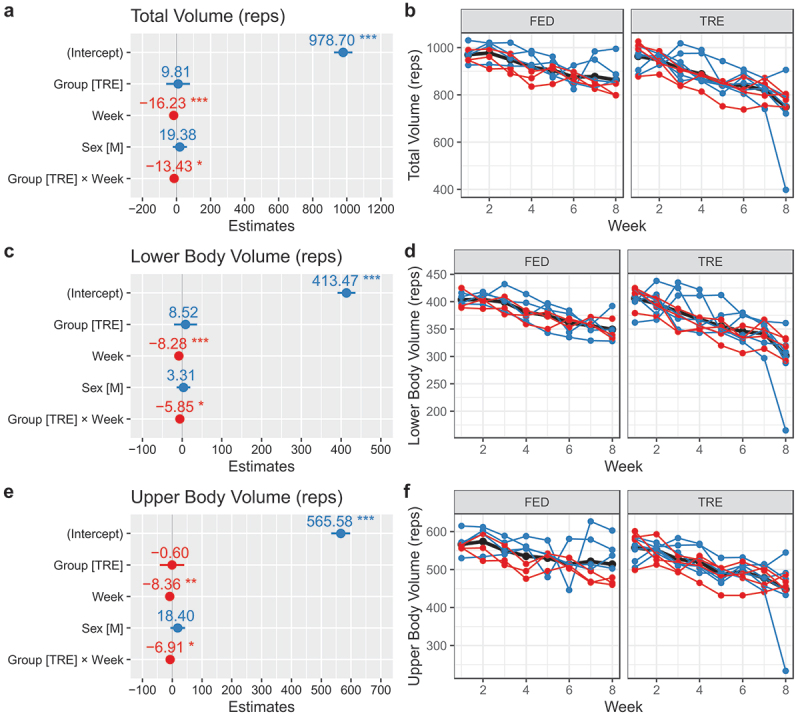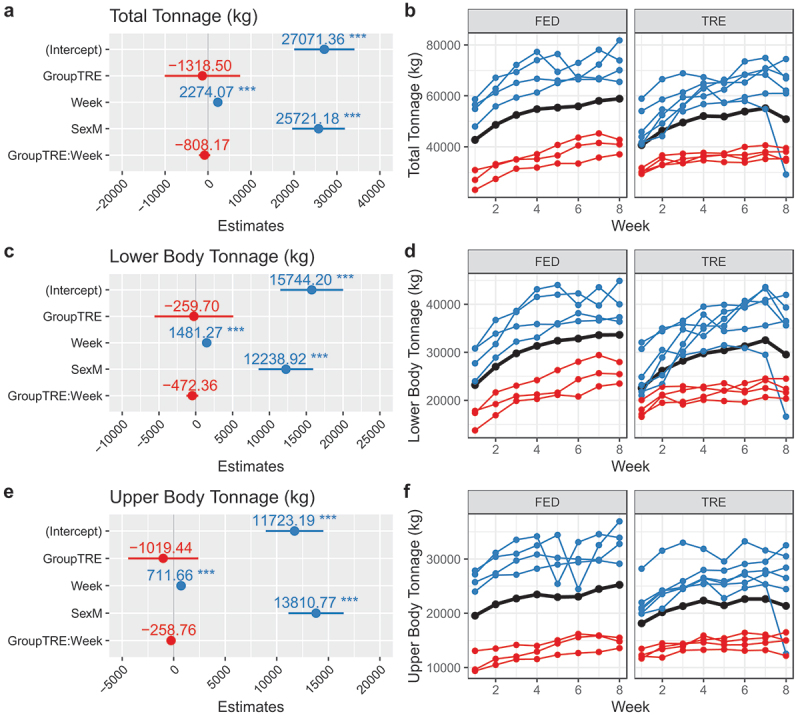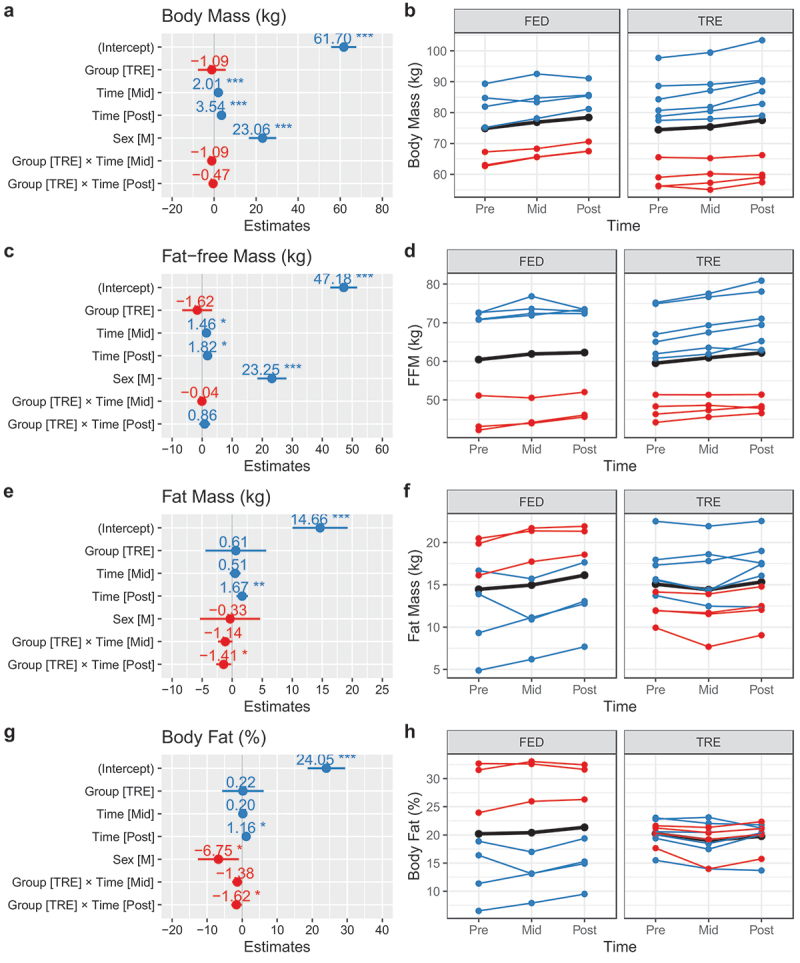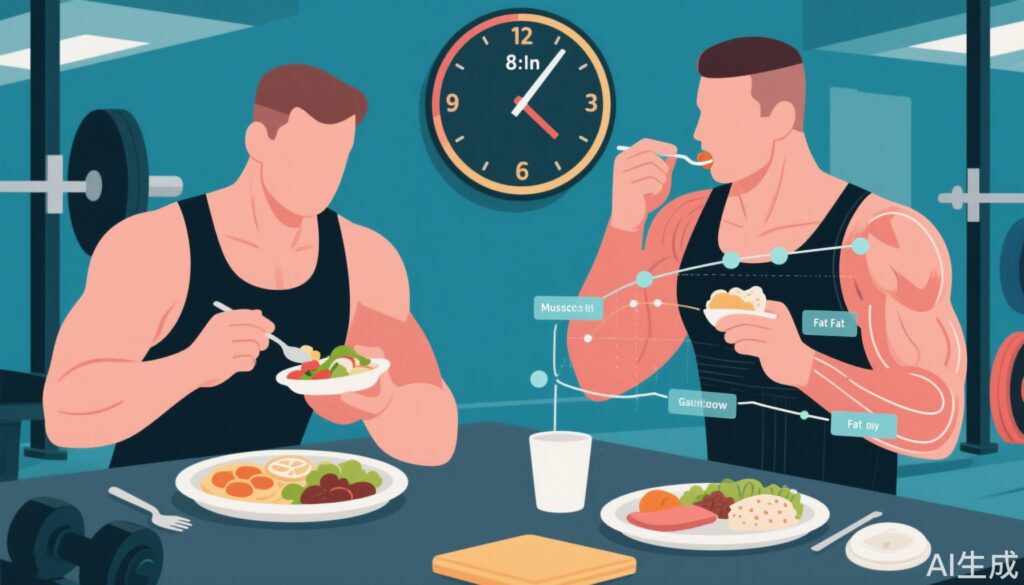Highlights
- Hypercaloric 16:8 TRE enables muscle and strength gains during resistance training, comparable to all-day feeding.
- TRE participants had lower total training volume and squat strength improvements compared to controls.
- TRE led to less fat mass gain despite similar increases in fat-free mass.
- No negative effects on mood or sleep were observed.
Study Background and Disease Burden
Time-restricted eating (TRE), a form of intermittent fasting where daily caloric intake is limited to a specific window, has gained popularity for weight management and metabolic health. However, its efficacy and practicality in maximizing muscle mass and strength—especially under hypercaloric (muscle-building) conditions in trained individuals—remains uncertain. For athletes and recreational lifters aiming to optimize body composition and performance, understanding the impact of TRE during resistance training is of clinical and practical importance.
Study Design
This randomized controlled trial enrolled 17 healthy, well-trained men (n=10) and women (n=7). Participants were randomly assigned to either:
- TRE group: Consumed all calories within an 8-hour window, beginning at least 1 hour post-exercise (16:8 TRE),
- FED group: Consumed the same number of calories distributed throughout the day.
Both groups followed a 10% hypercaloric, high-protein diet (2.2 g/kg/day) and performed supervised, progressive resistance exercise four times per week for eight weeks. The primary endpoints included changes in muscle strength (1RM), muscular endurance, body composition (fat-free and fat mass), total exercise volume, subjective energy, mood, and sleep ratings.
Key Findings
Dietary and Training Adherence
Both groups consumed nearly identical amounts of calories, protein, carbohydrates, and fats, ensuring that any observed effects were attributable to the eating window rather than macronutrient or energy differences. The mean eating window was 7.9 ± 0.1 hours in TRE versus 13.2 ± 0.6 hours in FED (p<0.001).
Exercise Volume and Energy Levels
The total number of repetitions completed over the intervention was lower in the TRE group (6,960 ± 287) compared to FED (7,334 ± 289), suggesting that the compressed feeding window may have modestly influenced training capacity. Subjective daily energy ratings were also lower in TRE at week 4 (-1.41; p=0.04) and trended lower at week 8 (-1.04; p=0.06), indicating a perceptible, if modest, decrement in perceived energy.

Strength and Muscle Gains
Both groups experienced increased maximal strength (1RM) in upper and lower body exercises and enhanced muscular endurance. However, gains in squat 1RM were 4.0 ± 1.9 kg lower in TRE (p=0.05), a statistically significant difference that may be meaningful for athletes prioritizing lower-body strength. Increases in fat-free mass were similar between groups (TRE: +2.67 kg; FED: +1.82 kg; p=0.04), underscoring the viability of TRE for muscle hypertrophy under hypercaloric, high-protein conditions.

Fat Mass and Body Composition
Fat mass increased in both groups but to a significantly lesser extent in TRE. The FED group added 1.4 ± 0.6 kg more fat mass (p=0.04), suggesting a potential body composition benefit for TRE when aiming to minimize fat gain during bulking phases.

Subjective Wellbeing and Sleep
Mood and sleep ratings remained stable in both groups, indicating that neither regimen adversely affected these important recovery factors over the 8-week period.

Expert Commentary
This study advances our understanding of the interplay between meal timing, caloric surplus, and resistance training adaptations. While 16:8 TRE does not compromise the ability to gain muscle mass or upper body strength, the modest reductions in total training volume and squat strength warrant consideration—particularly for athletes with high training demands or those seeking maximal lower-body gains. The reduced fat mass accrual with TRE is noteworthy, suggesting a potential advantage for physique athletes or anyone aiming to optimize lean mass gains. However, the subjective reduction in daily energy may impact training motivation or performance for some individuals, especially across longer durations.
Mechanistically, the timing of nutrient intake in relation to exercise could influence muscle protein synthesis and training output, though the high protein intake in both groups likely mitigated negative effects. These findings align with emerging literature indicating that meal timing is less critical for hypertrophy than overall energy and protein intake, but may still influence performance variables.
Conclusion
A hypercaloric 16:8 TRE protocol is feasible for well-trained individuals seeking muscle and strength gains, provided protein and calorie goals are met. The regimen may modestly reduce training volume and lower-body strength improvements, but offers the benefit of less fat gain during hypertrophic training. These trade-offs should be weighed in the context of individual goals and lifestyle preferences. Future research with larger cohorts and longer follow-up is warranted to further delineate the long-term impacts and potential mechanisms.
References
Blake DT, Hamane C, Pacheco C, Henselmans M, Tinsley GM, Costa P, Coburn JW, Campidell T, Galpin AJ. Hypercaloric 16:8 time-restricted eating during 8 weeks of resistance exercise in well-trained men and women. J Int Soc Sports Nutr. 2025 Dec;22(1):2492184. doi: 10.1080/15502783.2025.2492184 IF: 3.9 Q1 .
Jamshed H, Beyl RA, Della Manna DL, Yang ES, Ravussin E, Peterson CM. Early Time-Restricted Feeding Improves 24-Hour Glucose Levels and Affects Markers of the Circadian Clock, Aging, and Autophagy in Humans. Nutrients. 2019;11(6):1234.
Tinsley GM, La Bounty PM. Effects of intermittent fasting on body composition and clinical health markers in humans. Nutr Rev. 2015;73(10):661-674.


